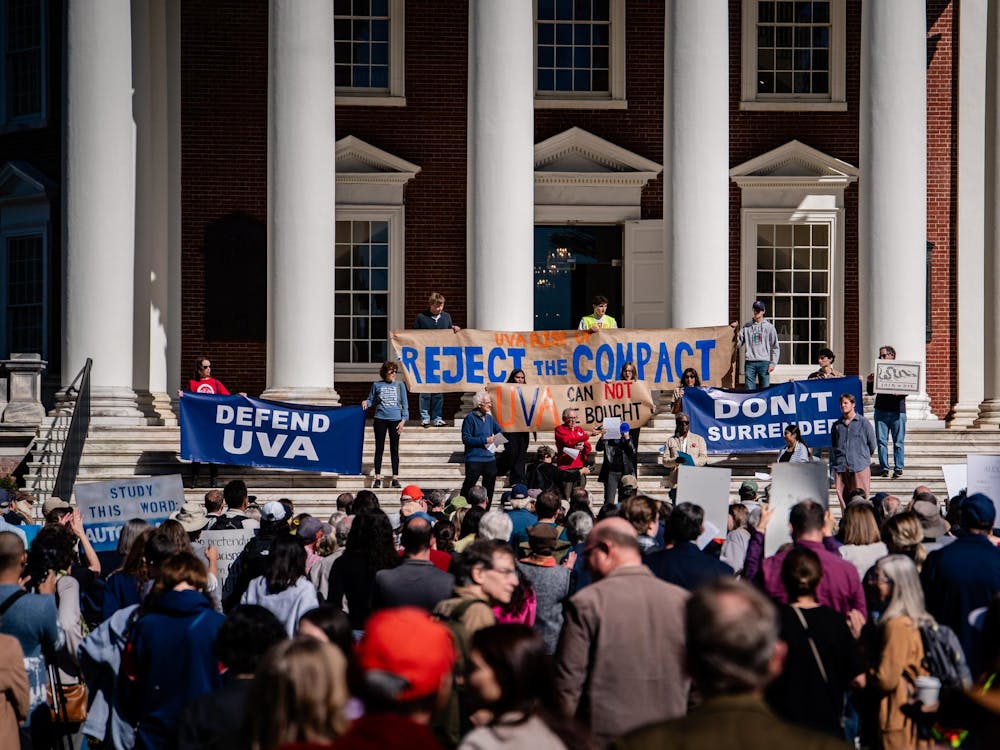Throughout the fall semester, the Sierra Student Coalition's Beyond Coal campaign has picked up momentum in its quest to shut down the University's coal-fired power plant within a decade and replace it with renewable sources of energy. There is no doubt that this is an important goal, given the negative environmental and public health costs associated with the coal plant's continued operation.
Yet as damaging and embarrassing as the coal plant may be - especially given its juxtaposition to the highly regarded University Medical Center and the surrounding "Clean Air Zone" - the campaign and the student body as a whole must recognize the positive steps that the administration is already taking toward moving the University in a more sustainable direction. Although these policies may not yet be enough to meet the campaign's objectives, they represent the best approach to sustainability at a time when the University's other financial obligations prohibit it from making an up-front commitment to closing down the coal plant.
The obvious barrier to achieving this drastic aim within the campaign's 10-year time frame is the substantial cost associated with doing so. It is true that such a transition would eventually pay for itself through cost savings that will be realized as prices for non-renewable energy sources rise in the future. According to estimates provided by both the administration and the campaign, however, the time horizon for such a payoff given the present state of renewable alternatives would be at least several decades.
This means the University would have to find the funds for undertaking a shut-down of its coal plant within its existing operating budget, which is already stretched thin across commitments to academic quality, financial aid and fair pay for low-wage workers. And although the recent news that the University's $5.3 billion endowment has exceeded pre-recession levels might cause some to question why that money is not put toward renewable energy initiatives, it remains the case that some of the endowment is restricted for specific purposes and much of the rest is dedicated to the University's investment portfolio so that it has a financial cushion to fall back upon should state support continue to decline.
Thus, the administration has opted in the short term to focus largely on conservation measures that are both financially feasible and oriented toward mitigating the disastrous consequences of coal burning. Among the administration's more prominent initiatives have been the retrofitting of old buildings to improve their energy efficiency, as well as the designing of new buildings in accordance with the U.S. Green Building Council's LEED certification standards. Cheryl Gomez, the University's director of energy and utilities, explained that these measures offer "payback within two years, and then we can use that money to engage in other projects." This is a smart strategy since it allows the University to reduce the overall level of energy it consumes - and, consequently, the amount of coal it burns - without necessitating major sacrifices in other core functions.
To its credit, the campaign seems to understand that the administration's approach is the most viable way to reduce the University's environmental impact in the immediate future. "In the short term, you want to reduce energy consumption as much as possible," said Chris Linsmayer, a campus organizer with the Sierra Student Coalition. "Then in 10 to 15 years the technology [to transition off coal] will be ready."
What is at issue, therefore, is whether the administration must establish a definitive target date for shutting down the coal plant to prove that it is serious about sustainability. Although such a declaration might provide reassurance to the campaign that the realization of its goals is on the horizon, it already seems clear that the administration is oriented toward the same ends. "Honestly, I think we're on the same page and that is to mitigate the impacts on the environment," Gomez said. "I don't think there's anyone who would advocate for burning fossil fuels."
Unfortunately, the present complications facing the University as it attempts to live up to the ideal of sustainability come from external factors upon which it exercises little control. Chief among these are a national political climate which prohibits rational discussion about the environmental consequences of non-renewable energy and a state political climate that deprives the University of the resources it needs to undertake consequential projects such as retiring the coal plant. Activist organizations such as the Sierra Student Coalition have the potential to alter these circumstances, and they should embrace this opportunity so as to allow the University to remain a leader in innovation and social responsibility in the 21st century.






